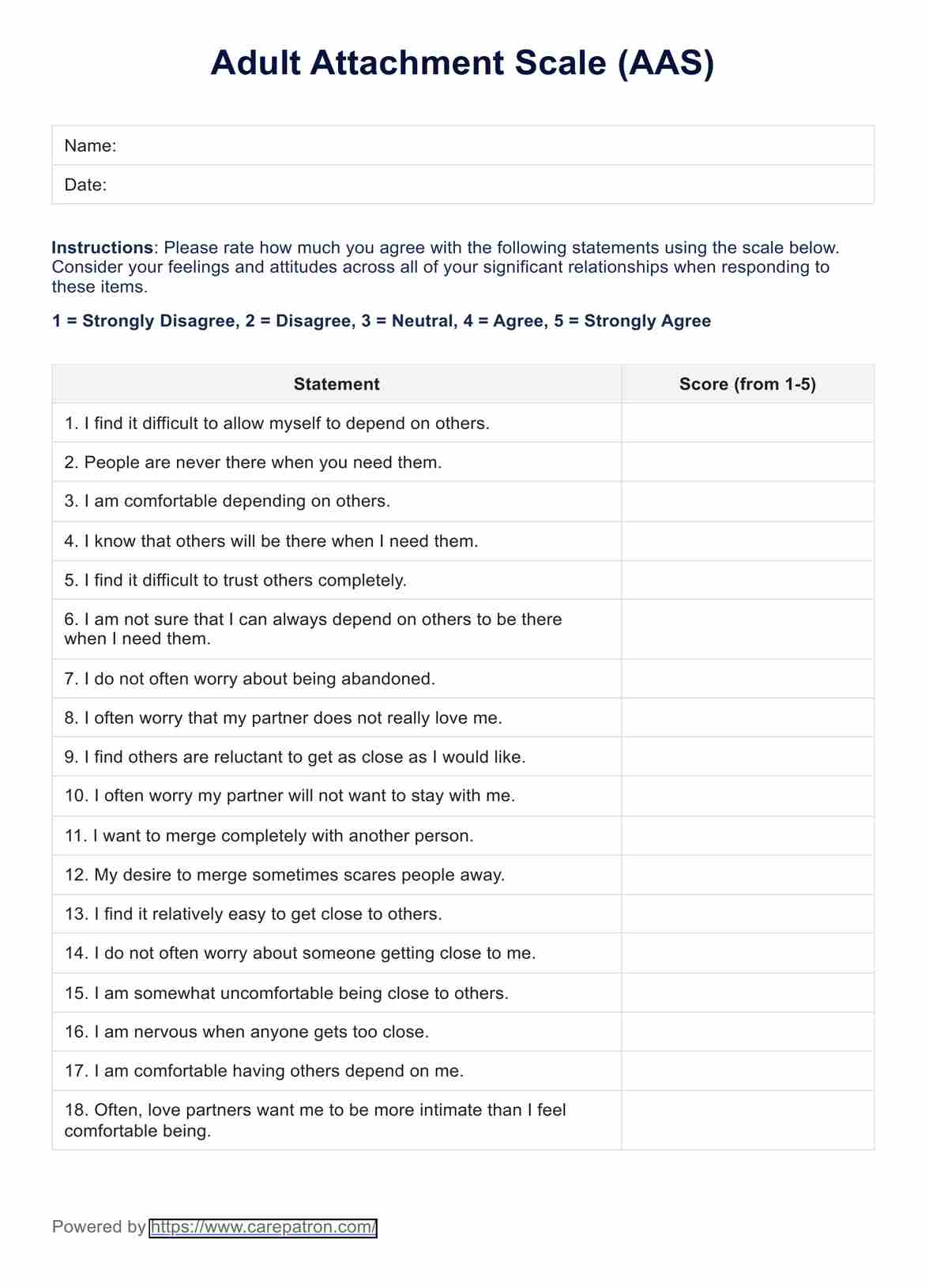The Adult Attachment Scale is used by mental health professionals, including psychologists, therapists, and counselors, as well as researchers studying attachment styles in adults.

Adult Attachment Scale
Discover the Adult Attachment Scales on Carepatron — a reliable tool for understanding attachment styles, improving relationship dynamics and mental health.
Use Template
Adult Attachment Scale Template
Commonly asked questions
The Adult Attachment Scale is used when there's a need to understand an individual's attachment style, particularly in interpersonal relationships and attachment-related challenges.
The Adult Attachment Scale is used by having individuals rate a series of statements related to their feelings and beliefs about relationships. The responses are then scored and interpreted to determine the individual's dominant attachment style.
EHR and practice management software
Get started for free
*No credit card required
Free
$0/usd
Unlimited clients
Telehealth
1GB of storage
Client portal text
Automated billing and online payments











